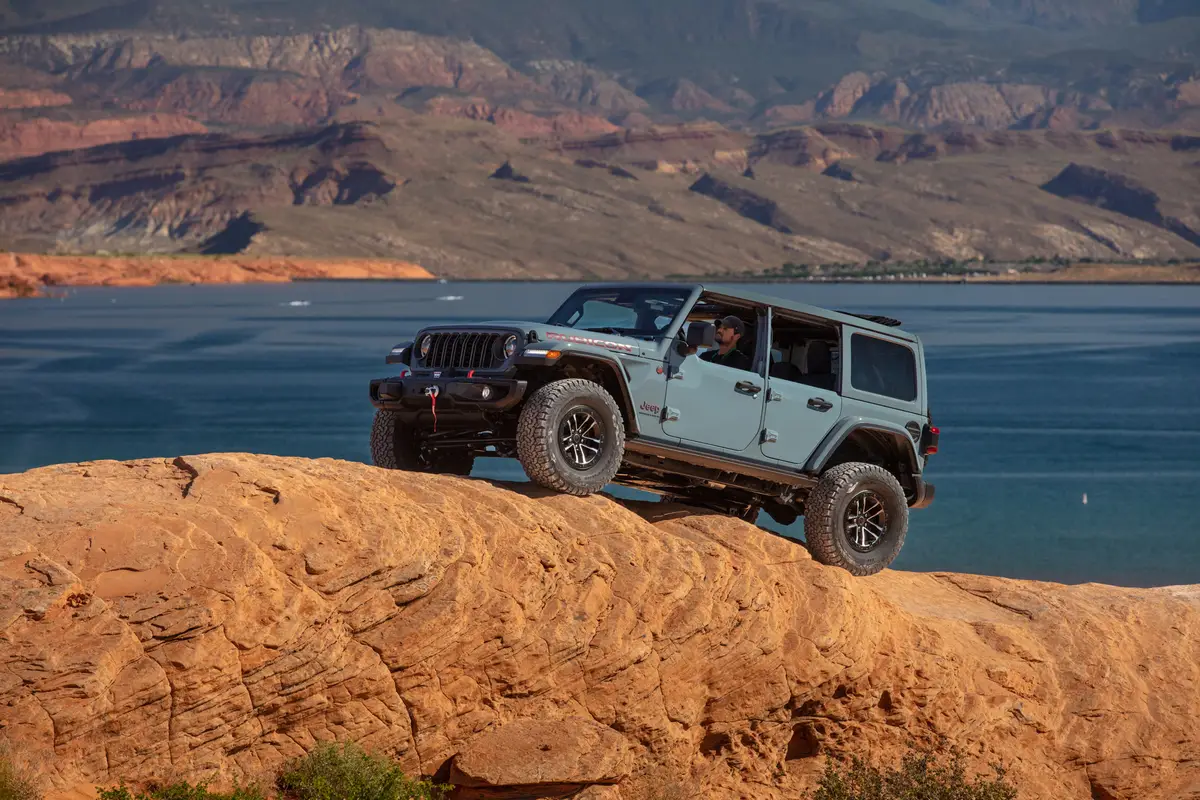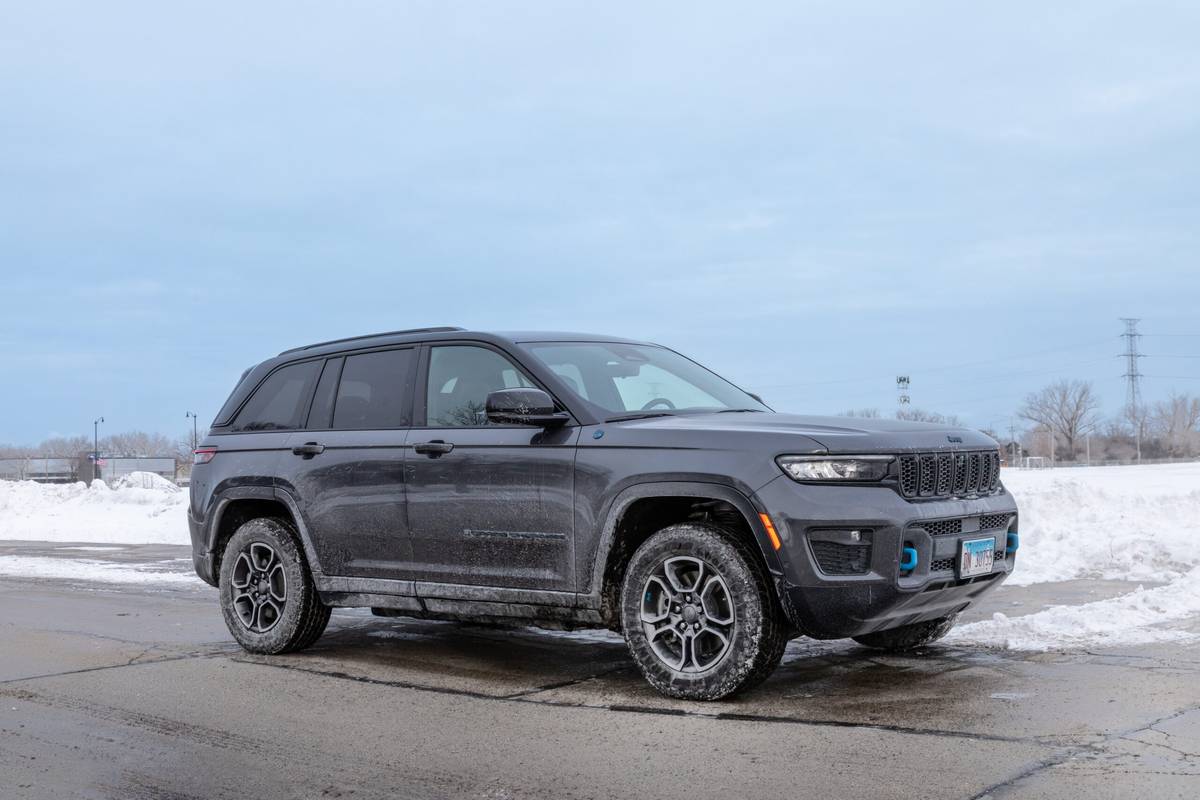The Morning Call and Mcall.com's view
Chrysler’s new LeBaron GTS, introduced early this month, is a liftback like a sporty-looking sedan with a short, though attractively styled, trunk deck. But you soon get the idea that something is different when you open the trunk and the rear window goes up with it.
But that’s not the only surprise of the GTS. It not only has features of a more expensive car, it acts like a more expensive car. But Chrysler has been selling a lot of cars lately and one of the big reasons is that it has been offering a good value for the dollar across the spectrum of its automotive offerings.
The GTS has a distinctive European touring sedan look about it, but this is what Chrysler had in mind, since this is the market it is pursuing. This group of car buyers is known as the ”New Middle” market and is comprised of (in Chrysler’s own words) ”those upwardly mobile, more affluent, young- minded buyers who are looking for more than just basic transportation.” Chrysler’s going after the Yuppies, and its advertising campaign boasts that the GTS bests certain models of the big-bucks BMW and Mercedes-Benz.
The GTS, however, will probably have a much broader market base. And this is because it is the type of car that comes in one basic package but with many variations. Accommodations range from plain to posh, and performance from mild to wild. The test car (supplied by Rothrock Chrysler-Plymouth, 15th St. and Route 22, South Whitehall) happened to be one of the basic models – it was priced under $10,000 – but was by no means a dull car.
Styling for the GTS is straight from the contemporary aerodynamic school of auto design, and it’s sleekness is rewarded with a drag coefficient of 0.37. The hood drops sharply and the windshield is raked at 58 degrees, which combines to give it a very fast look in front. There is some family resemblance to the other LeBaron (code named the K-body car) but the GTS (an H-body car) has softer styling (as opposed to the K-body’s more angular look) and appears more aggressive than its little brother.
Basic exterior dimensions include a wheelbase of 103.3 inches, overall length of 180.3 inches, width of 67.9 inches, height of 53 inches and curb weight of 2,600 pounds. There are two interesting figures here: One is the wheelbase, which is relatively long for a car this size and helps to contribute to an overall smooth ride. The other is the weight, which is very low for a mid-size car. That’s right. Even though the GTS may look like a compact it is an intermediate and a good-sized one at that.
Passenger and luggage volume are rated by EPA at 116 cubic feet. The dimensions for a mid-size car range between 110 and 120 cubic feet. So, even without the aid of a pocket calculator or a home computer, one should be able to figure this one out. But even before the EPA began scoping out the innards of autos, Chrysler was noted for roomy interiors. And wi th the GTS’s front- wheel drive configuration, there’s plenty of room. In fact, even if the Yuppies had a couple of kids there would be space for all.
Front seat room is very good, and drivers and passengers of all sizes and shapes should be able to fit in comfortably. One thing to keep in mind, though, is that the seating is very low with the standard non-powered seat. This, too, seems to be a Chrysler characteristic and although tall drivers will have no complaints, short people may either have to use a cushion, block up the seat or go to a power seat to be able to see out. The standard non-tilt steering wheel also seems to be set up for taller drivers. So, try things on for size first.
Rear seat room is good – even with the front seats extended fully aft. The liftback arrangement has not taken away any room. Cargo volume measures 18.3 cubic feet with the rear seat back up and 42 cubic feet with the seat back down. The GTS is listed as a five-passenge vehicle but there is a six- passenger seating arrangement available in the upgraded Premium model (the test car was a High Line) with automatic transmission. This is made possible with a center folding armrest and cushion.
Instruments and controls are neatly arrayed. Standard are full instrumentation, including a tachometer, red ”check gauges,” warning lights and an up-shift light (on manual transmissions). The instruments on the Premium model give the driver the same basic comprehensive message, but through the magic of a nifty digital dashboard, complete with illuminated graphs and multi-colored lights, etc. For purists with an affinity for the higher-comfort level of the Premium, but an allergy to the Star Wars dash, the analog – white on black gauges – dash is available in the more expensive model – at no extra cost.
The test car was powered by Chrysler’s tried and true 2.2 liter (135 cubic inch) four-cylinder engine. This engine features single-point electronic fuel injection and is rated at 99 horsepower at 5,600 rpm and 121 foot pounds torque at 3,200 rpm. But the engine did provide above adequate performance for all Lehigh Valley driving conditions and did deliver impressive fuel mileage.
Helping out both performance and mileage was the test car’s five-speed manual transmission, a close ratio box with a short throw but somewhat touchy clutch. A three-speed automatic is available as an option. Mileage for the new test car was 22 miles per gallon for city driving and 30 mpg over local highways. EPA rating for the five-speed is 23 mpg city/34 mpg highway. The automatic version is rated at the same 23 mpg city but 27 mpg highway.
This is the mild engine. The wild version is basically the same but has multi-point electronic fuel injection and a turbocharger. This beast is rated at 146 horsepower at 5,200 rpm and 168 foot pounds torque at 3,600 rpm. It should take little imagination to figure out how rapidly 146 horses will propel a 2,600 pound car.
Another of the surprises of the GTS is its suspension and handling. Even the standard suspension – known as Road Touring suspension – is tuned to the taut side and is capable of holding everything together under demanding driving. The suspension features semi-independent ”Iso-struts” (Chrysler’s version of MacPherson struts) up front, trailing arms in the rear, gas-charged shocks and large diameter sway bars fore and aft. Steering is a fast-ratio rack-and-pinion system that travels from lock-to-lock in only 2.5 turns. Goodyear Vector and Michelin all-weather steel-belted P185/70R14 tires are standard. Although the ride is on the firm side, it is not too firm to be annoying. That’s where the relatively long wheelbase comes in.
For the real enthusiast, there are two other suspensions available first features larger 14-inch tires, higher-charged shocks and performance-tuned spring rates. The II packa ge has all of this plus husky Goodyear Eagle GT P205/60HR15 tires on cast aluminum wheels. To get some idea of what to expect out of the optional suspensions, spring rates for the basic suspension are 85 pounds per square inch in front and 160 in the rear, while the upgraded systems are rated at 120 pounds per square inch in front and 200 in the rear. Even the long wheelbase won’t help the ride here. Also, the steering on the II package will go from lock-to-lock in only two turns.
Base price for the test car came to $9,099, which included power steering, power brakes, an AM/FM/Mx electronically turned radio with digital clock and four speakers and a nice level of trim and appointments. The full price came to $9,813 – the base, a delivery charge of $414 and the following options: Pearl coat paint, $40; rear window defogger, $143; dual remote control mirrors, $64, and deluxe windshield wipers, $53.
It is possible, of course, to spend much more money on the TS, but the basic package was quite attractive and livable.
Latest news



